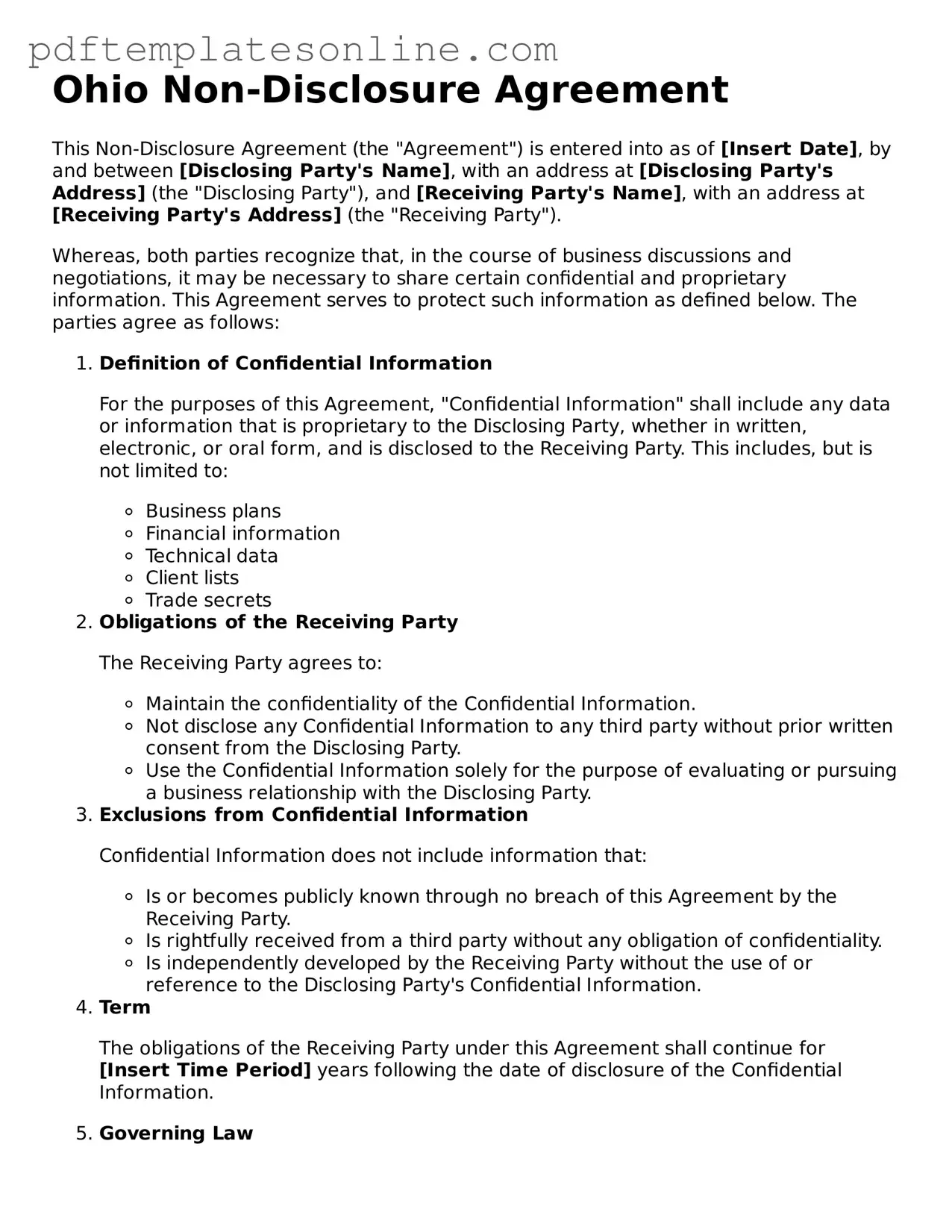Filling out the Ohio Non-disclosure Agreement form can be straightforward, but many people make common mistakes that can lead to issues down the line. One frequent error is not providing complete information. When details are missing, the agreement may not hold up in court. Always ensure that all necessary fields are filled in accurately.
Another mistake is failing to clearly define the confidential information. Vague language can create confusion about what is protected. It's crucial to specify exactly what information should remain confidential to avoid misunderstandings later.
Many people also overlook the importance of including the duration of the confidentiality obligation. If this is not stated, it can lead to disputes about how long the agreement lasts. Make sure to specify a clear time frame for how long the information must remain confidential.
Some individuals forget to include the signatures of all parties involved. An unsigned agreement may not be enforceable. Ensure that everyone who is bound by the agreement signs it, as this step is essential for its validity.
Another common oversight is not reviewing the terms of the agreement thoroughly. Skimming through the document can lead to missed clauses or obligations. Take the time to read and understand each section, as this can prevent future complications.
People sometimes make the mistake of using outdated versions of the form. Laws can change, and using an old template may not reflect current legal standards. Always check to ensure you have the most recent version of the Non-disclosure Agreement.
Additionally, some individuals may not seek legal advice when needed. While it's possible to fill out the form on your own, consulting with a legal expert can help clarify any questions and ensure that the agreement meets all legal requirements.
Lastly, failing to keep a copy of the signed agreement is a mistake that can lead to problems later. Always store a signed copy in a safe place. This way, you can refer back to it if any issues arise in the future.
